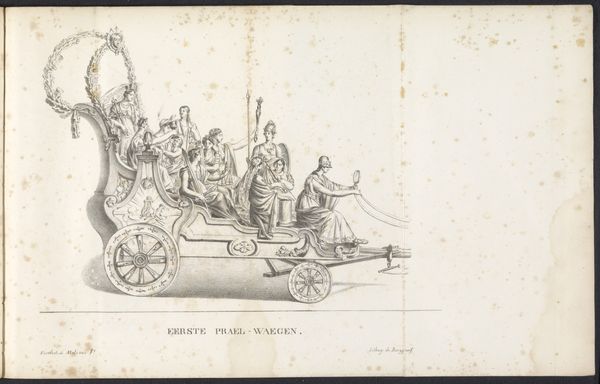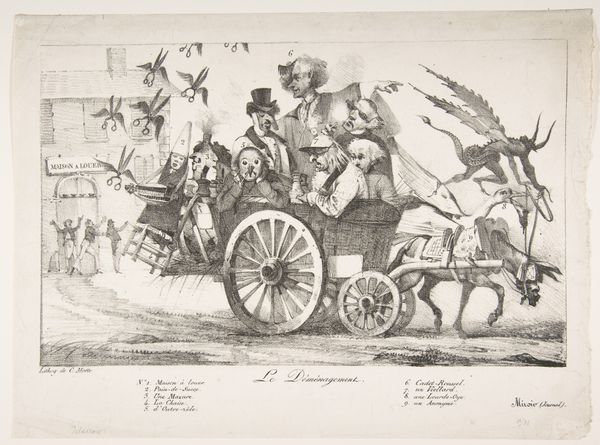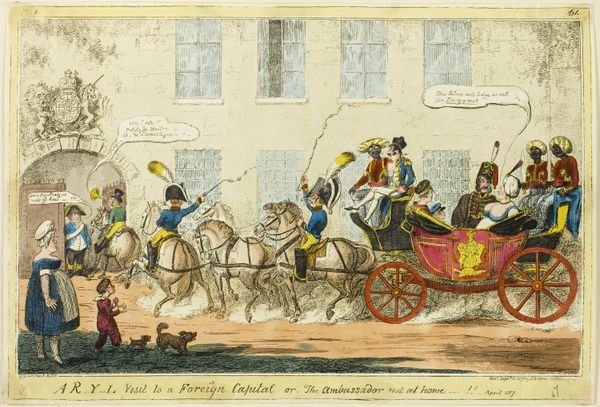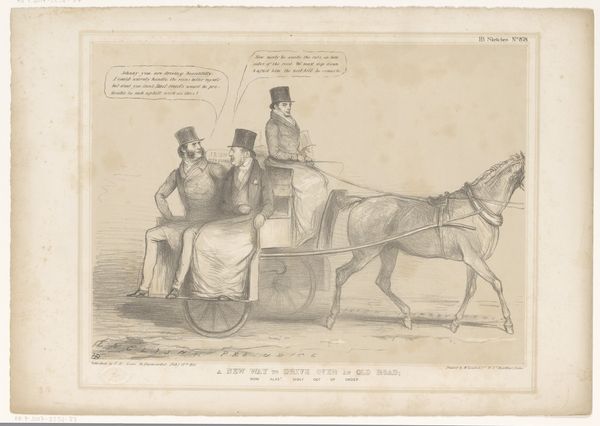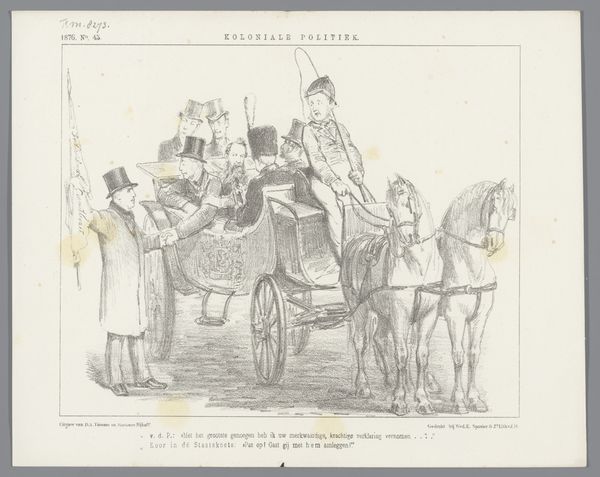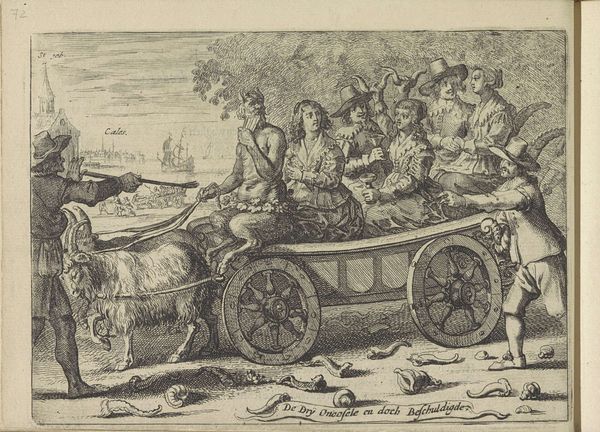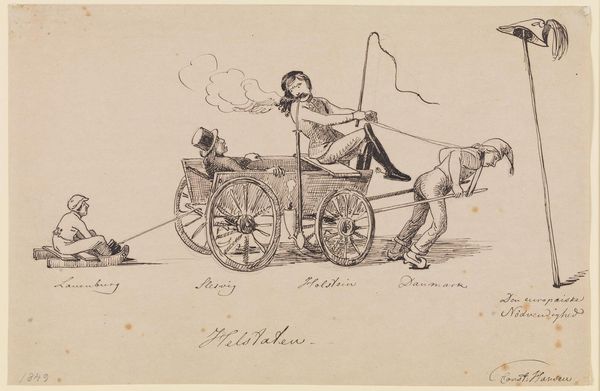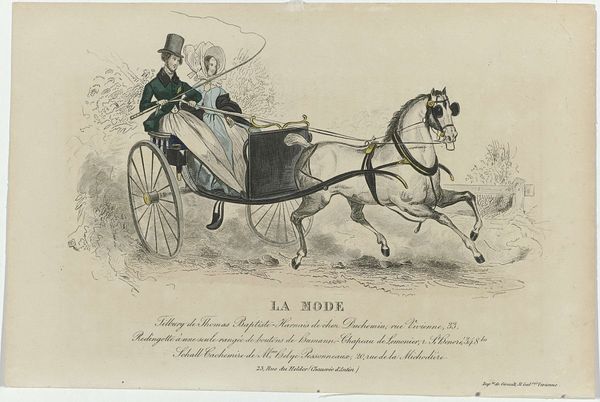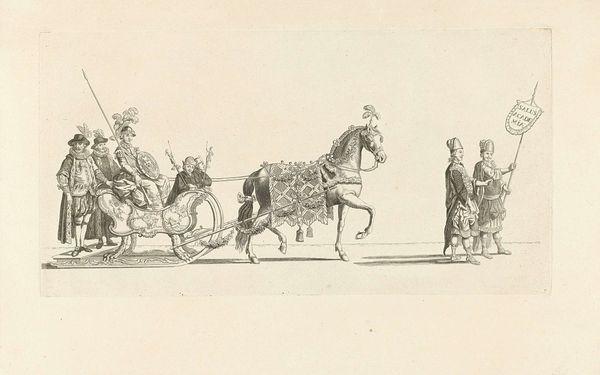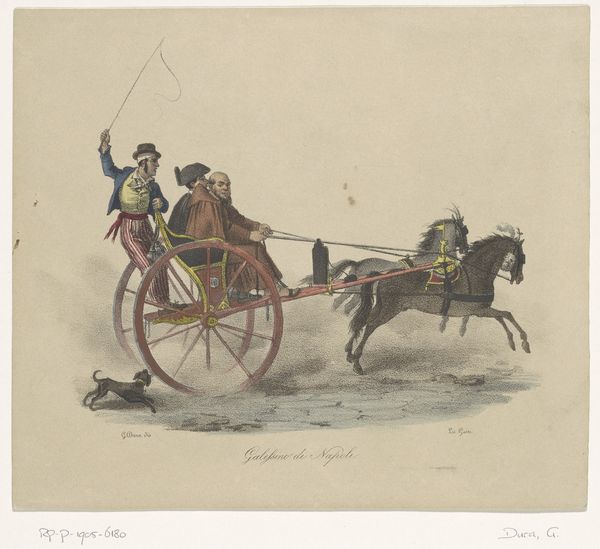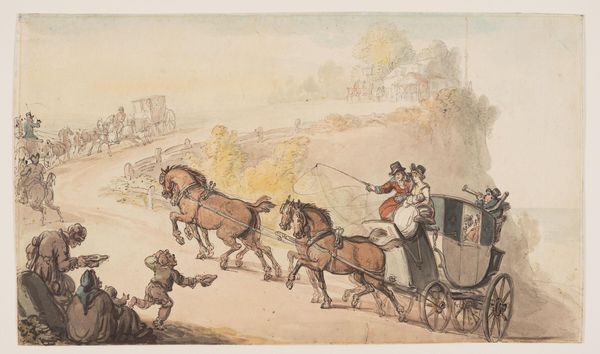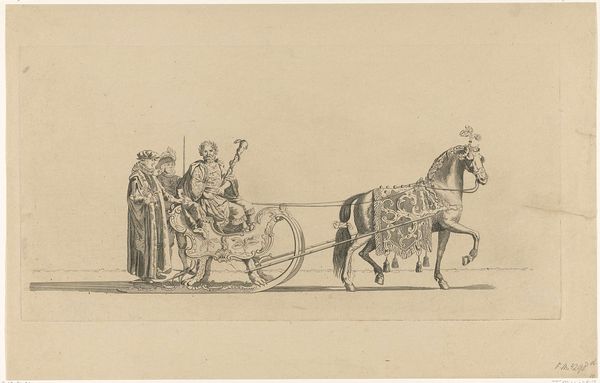
Spotprent op de Nederlandsche Maatschappij tot Bescherming der Dieren, 1865 1865
0:00
0:00
drawing, print, etching, pen
#
drawing
#
quirky sketch
# print
#
pen sketch
#
etching
#
caricature
#
social-realism
#
personal sketchbook
#
idea generation sketch
#
sketchwork
#
pen-ink sketch
#
sketchbook drawing
#
pen
#
storyboard and sketchbook work
#
sketchbook art
#
initial sketch
Dimensions: height 215 mm, width 275 mm
Copyright: Rijks Museum: Open Domain
Curator: This pen and etching, dating from 1865, is titled "Spotprent op de Nederlandsche Maatschappij tot Bescherming der Dieren," or "Caricature of the Dutch Society for the Protection of Animals." It's by Johan Michaël Schmidt Crans. Editor: My first impression? Satirical and scathing! There’s a stark visual contrast between those pulling the carriage and its entitled passengers, and there's definitely an underlying message being conveyed through its caricature style. Curator: Indeed. The work reflects the societal tensions surrounding animal welfare at that time. The "Dutch Society for the Protection of Animals," established in 1864, sought to address cruelty in animal treatment and slaughter. This image specifically satirizes the gap between the Society’s supposed goals and its practical impact. Editor: Precisely. Look at the figures in the carriage—they appear to be wealthy men smoking cigars, while animals are stuffed haphazardly inside, also smoking. And then those workers at the front...It's an incredibly sharp critique of bourgeois society, with animal cruelty serving as a pointed metaphor for class inequality and power dynamics. The artist challenges the idea that animal welfare can be separated from broader societal injustice. Curator: Yes, the smoking adds a layer of commentary about excesses and indifference. The animals smoking alongside the men suggest a shared, yet forced, participation in harmful behaviours. It speaks volumes about how industries and societal structures normalize mistreatment across different species. Editor: And the carriage itself, pulled by labourers rather than horses, emphasizes the exploitation inherent within these systems. There’s a compelling analogy here—where those who are supposed to care are instead burdening others and participating in these destructive activities. It highlights complicity. Curator: Considering its social realist style and pointed political messaging, this piece is clearly aiming to incite reflection, perhaps even action. Crans effectively uses caricature to dismantle the public image of the society and expose the underlying hypocrisy of social structures. Editor: Absolutely. It certainly made me rethink the nuances of societal efforts towards welfare then, as it continues to prompt broader considerations of power structures in contemporary times. Curator: A powerful example of art's role in critiquing societal issues and instigating dialogue, then and now.
Comments
No comments
Be the first to comment and join the conversation on the ultimate creative platform.
